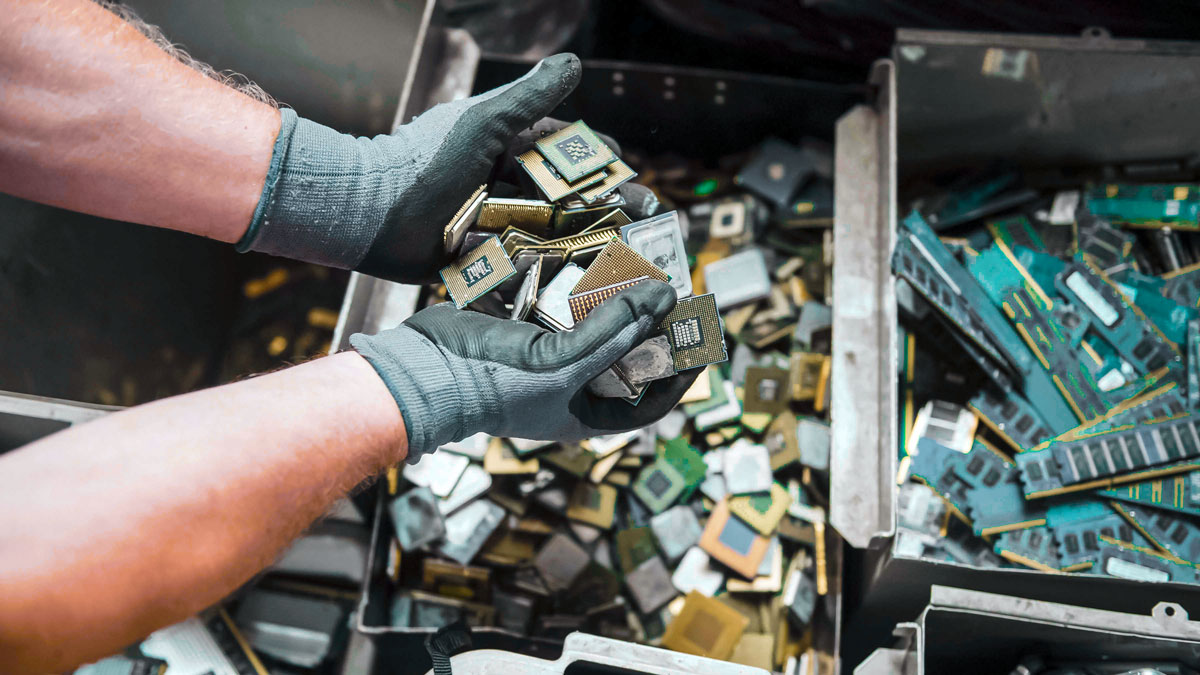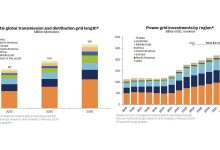An Opportunity in the Circular Economy: E-Waste
Electronic waste, also called e-waste, various forms of electric and electronic equipment, is an important point for discussion on the circular economy agenda. In a circular economy, the intention is to produce no waste or pollution. Instead, products, parts, and materials are used, cared for, repaired, reused, and recycled as much as possible.
Electronic devices and electrical equipment, from household appliances to small networks of solar panels or ‘smart’ phones and other ITC products, bring huge benefits to humanity and provide new opportunities for development. These are valuable tools for society, for increased welfare, extension of education, provision of quality health care services, facilitating trade, as well as addressing challenges generated by climate change. Digitization and ensuring large-scale connectivity are also essential for achieving the 17 sustainable development objectives.
But, on their entire value chain, from the extraction of valuable ores (iron, copper, gold, etc.), included in the composition of electronic products, to their production, transport, retail sale, consumption and elimination from the circuit, there are large quantities of wasted resources, and the system generates many negative effects and a strong ecological footprint. Electronic and electrical equipment disposed of contain potentially harming materials, which pollute the environment and increase health risks for those working in the field of recycling. Every year, approximately 50 million tons of electronic and electrical waste (e-waste) are produced globally, the equivalent in weight of all commercial aircraft ever built.
It should know that, for example, in the EU, less than 40% of total e-waste is recycled, the rest not being subject to a sorting process. The recycling rate varies from one Member State to the other. According to Eurostat (2020), in 2017 Croatia was the country with the highest rate of e-waste recycling, of 81.3%, at the opposite side being Malta with 20.8%. Romania in 2016 reported a rate of only 25% according to the same sources, ranking on the penultimate place. If nothing more is done compared to what is done at the moment, the quantity of waste at global level will double by 2050, according to the report ‘A New Circular Vision for Electronics – WEF, 2019’.
E-waste should be seen as an opportunity. For example, there is 100 times more gold in one ton of mobile phones than in a ton of ore from which gold is extracted. Collection of resources from electronic equipment produces substantially fewer carbon dioxide emissions than mining. Electronic goods in operation and their components are worth more than the materials they contain. Therefore, extending the life of products and the reuse of components brings an even greater economic benefit. There is also a possibility to build a more circular system, in which resources are not extracted, used and thrown away, but capitalized on and reused in ways that create decent and sustainable jobs.
In addition to the directive restricting the use of hazardous substances in electrical and electronic equipment adopted in 2011 and a set of regulations requiring importers to carry out certain general supplier checks, in the context of respect for human rights, the European Commission includes as a priority in the new Circular Economy Action Plan (CEAP) the reduction of electronic and electrical waste. The proposed plan establishes immediate objectives, such as eco-design, the “right to repair” and improving reusability in general, the introduction of a common charger for mobile phones and other similar devices, and the creation of a reward system to encourage the recycling of electronic products.
The amount of waste electrical and electronic equipment (widely known as WEEE or e-waste) generated every year in the EU is increasing rapidly. It is now one of the fastest growing waste streams.
EU rules on WEEE aim to contribute to sustainable production and consumption. They address environmental and other issues caused by the growing number of discarded electronics in the EU.
Background
Waste from electrical and electronic equipment includes a large range of devices such as computers, fridges and mobile phones at the end of their life.
This type of waste contains a complex mixture of materials, some of which are hazardous. These can cause major environmental and health problems if the discarded devices are not managed properly. In addition, modern electronics contain rare and expensive resources, which can be recycled and re-used if the waste is effectively managed.
Improving the collection, treatment and recycling of electrical and electronic equipment (EEE) at the end of their life can: improve sustainable production and consumption; increase resource efficiency; contribute to the circular economy.
The EU has introduced the WEEE Directive and the RoHS Directive to tackle the issue of the growing amount of WEEE.
Objectives
The WEEE Directive aims to contribute to sustainable production and consumption by:
- Preventing the creation of WEEE as a first priority
- Contributing to the efficient use of resources and the retrieval of secondary raw materials through re-use, recycling and other forms of recovery
- Improving the environmental performance of everyone involved in the life cycle of EEE.
In order to achieve these objectives, the Directive:
- Requires the separate collection and proper treatment of WEEE and sets targets for their collection as well as for their recovery and recycling
- Helps European countries fight illegal waste exports more effectively by making it harder for exporters to disguise illegal shipments of WEEE
- Reduces the administrative burden by calling for the harmonisation of national EEE registers and of the reporting format
Circular Economy Action Plan
The EU’s new circular action plan paves the way for a cleaner and more competitive Europe.
The European Commission adopted the new circular economy action plan (CEAP) in March 2020. It is one of the main building blocks of the European Green Deal, Europe’s new agenda for sustainable growth. The EU’s transition to a circular economy will reduce pressure on natural resources and will create sustainable growth and jobs. It is also a prerequisite to achieve the EU’s 2050 climate neutrality target and to halt biodiversity loss.
The new action plan announces initiatives along the entire life cycle of products. It targets how products are designed, promotes circular economy processes, encourages sustainable consumption, and aims to ensure that waste is prevented, and the resources used are kept in the EU economy for as long as possible.
It introduces legislative and non-legislative measures targeting areas where action at the EU level brings real added value.







